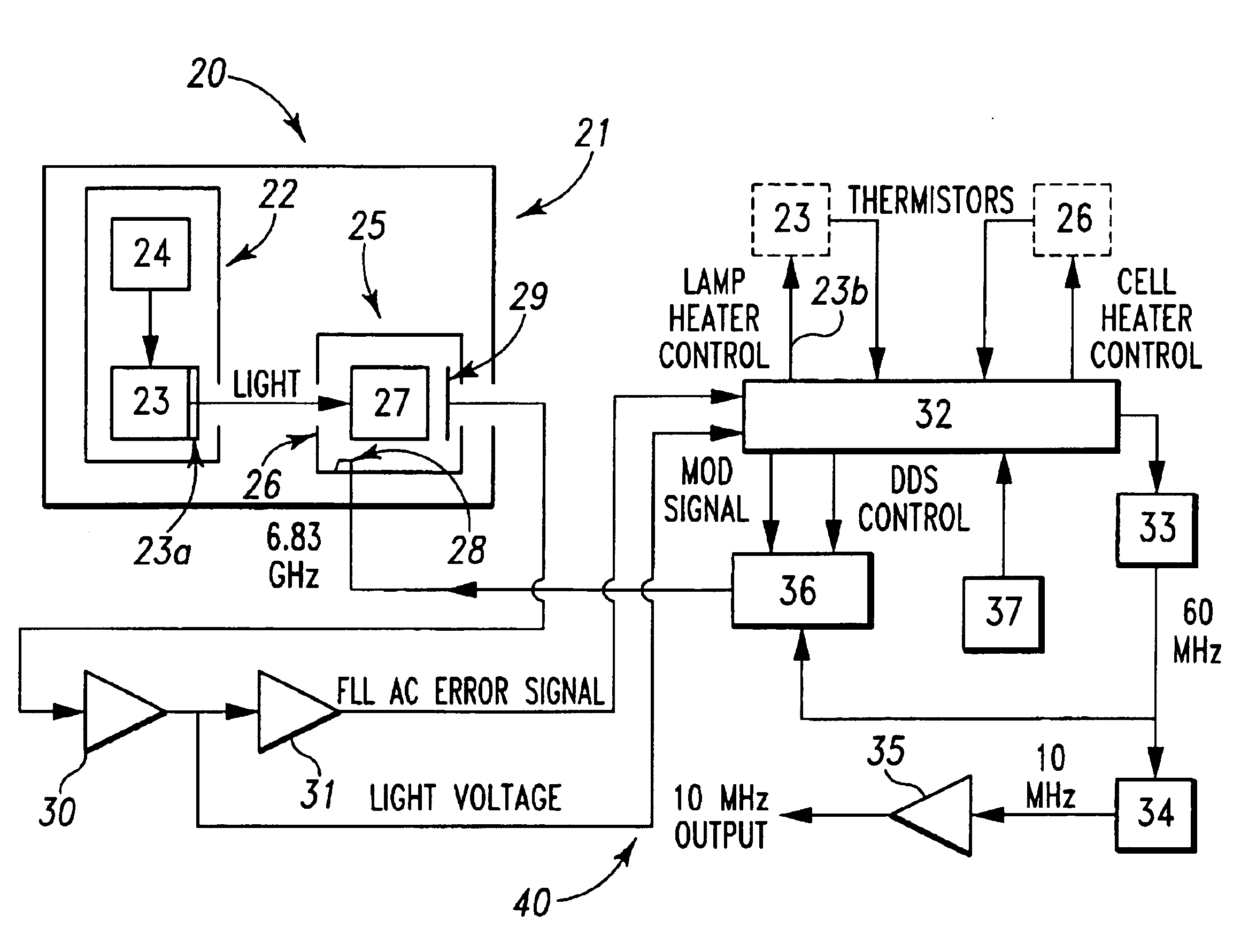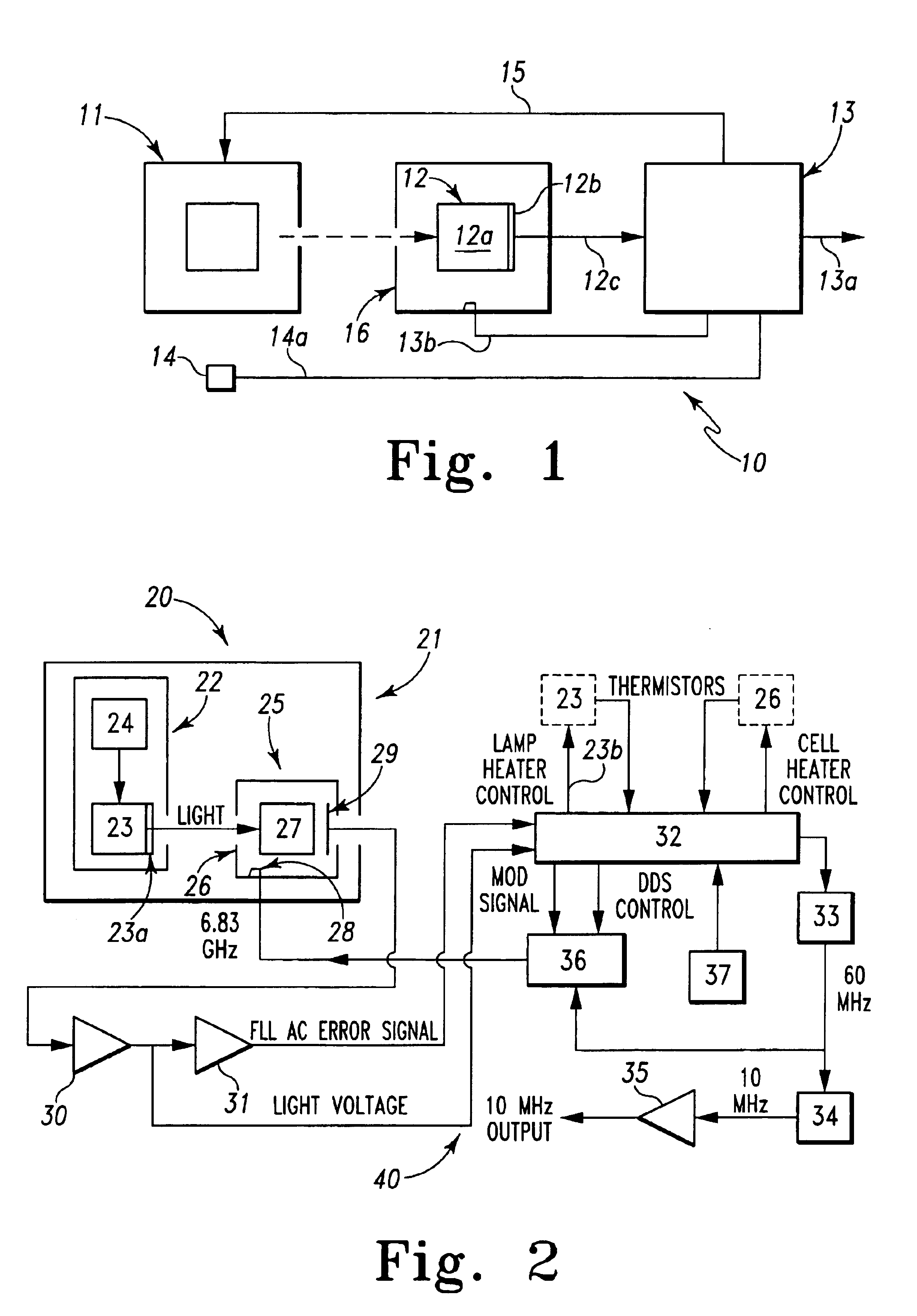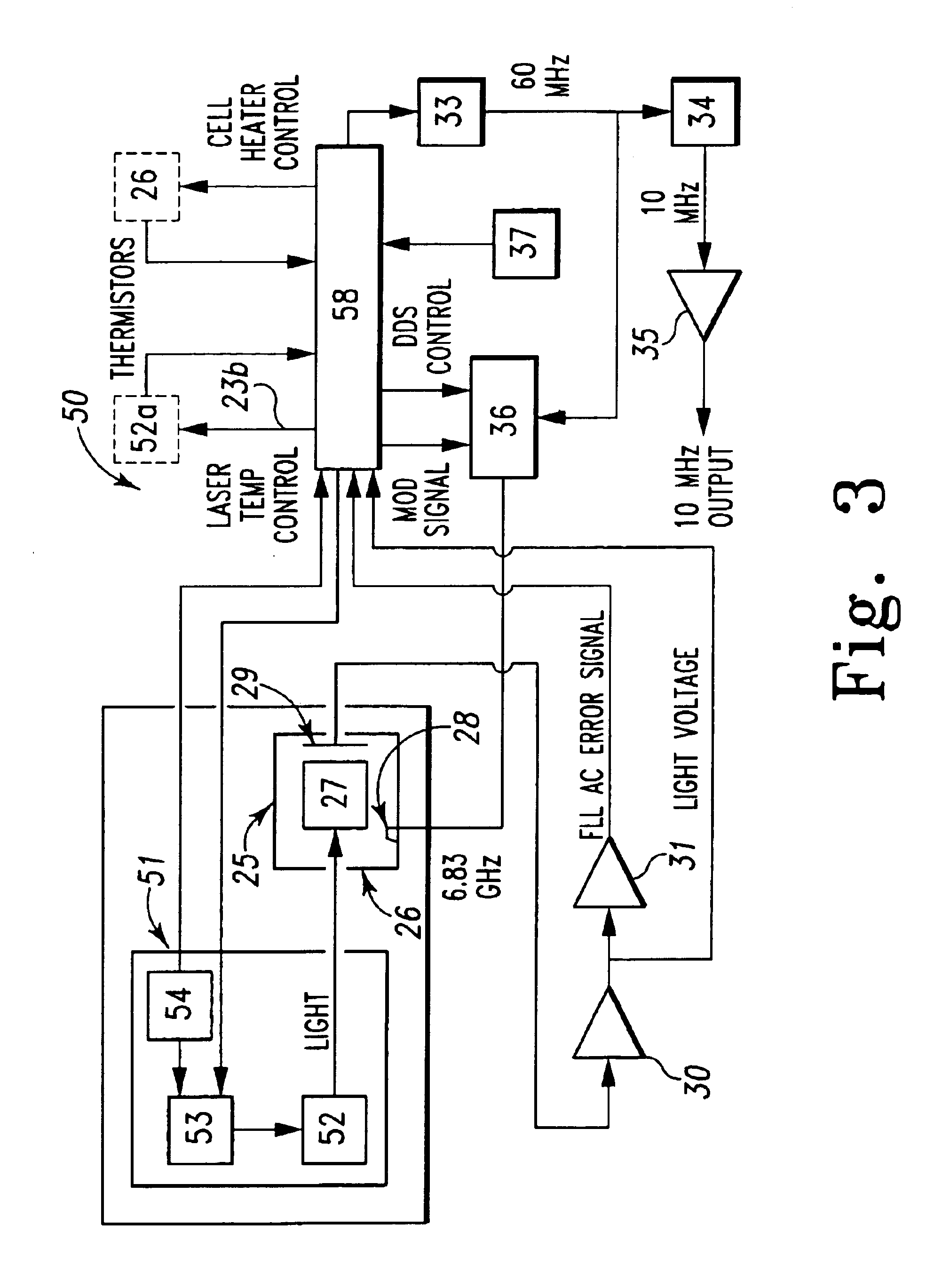Light stabilization for an optically excitable atomic medium
a technology of optical excitability and atomic medium, which is applied in the direction of semiconductor lasers, instruments, horology, etc., can solve the problems of complex achievement of this result, no of the older methods presently satisfactory, and the temperature of the light source and the gas cell is more difficult to control
- Summary
- Abstract
- Description
- Claims
- Application Information
AI Technical Summary
Benefits of technology
Problems solved by technology
Method used
Image
Examples
embodiment 50
[0065]In the embodiment 50 of FIG. 3, light intensity is stabilized by controlling the means 51 for providing a controlled emission of D transition light, whether for the D1 resonance line of the atomic gas or the D2 resonance line of the atomic gas, by effecting simultaneous changes in both laser temperature and laser injection current. If only the temperature of the laser is changed in an attempt to stabilize the light intensity, the optical frequency of the laser will also be altered; likewise, if only the laser injection current is changed in an attempt to stabilize the light intensity, the optical frequency of the laser will also be altered. By themselves, neither is a permissible option since the laser light frequency must be controlled so as to make it coincide with one of the D1 or D2 optical resonance frequencies of the atoms of the atomic gas and also to control the light-shift-coefficient, kLS. In the FIG. 3 embodiment, the light intensity is controlled in such a way as n...
embodiment 60
[0069]In the embodiment 60 of FIG. 4, light intensity is stabilized by controlling the means 61 for providing a controlled emission of D transition light, whether for the D1 resonance line or the D2 resonance line of the atomic gas by variable attenuation of the D transition light emitted from the means 61. As illustrated by FIG. 4, the means 61 for controlling the emission of D transition light includes a liquid crystal light attenuator 66. Again, the intensity of the light entering cell 27 is stabilized by using essentially the same method as is used for the embodiments of FIG. 2 and FIG. 3, with the exception that the light-control element is liquid-crystal light attenuator 66 instead of devices, such as the lamp oven 23 or the laser heater 52a, that control the temperature of light sources 22 and 51, respectively.
[0070]The control output that is sent to liquid-crystal light attenuator 66 is the output of an integrator whose input is proportional to the difference between the sam...
PUM
 Login to View More
Login to View More Abstract
Description
Claims
Application Information
 Login to View More
Login to View More - R&D
- Intellectual Property
- Life Sciences
- Materials
- Tech Scout
- Unparalleled Data Quality
- Higher Quality Content
- 60% Fewer Hallucinations
Browse by: Latest US Patents, China's latest patents, Technical Efficacy Thesaurus, Application Domain, Technology Topic, Popular Technical Reports.
© 2025 PatSnap. All rights reserved.Legal|Privacy policy|Modern Slavery Act Transparency Statement|Sitemap|About US| Contact US: help@patsnap.com



